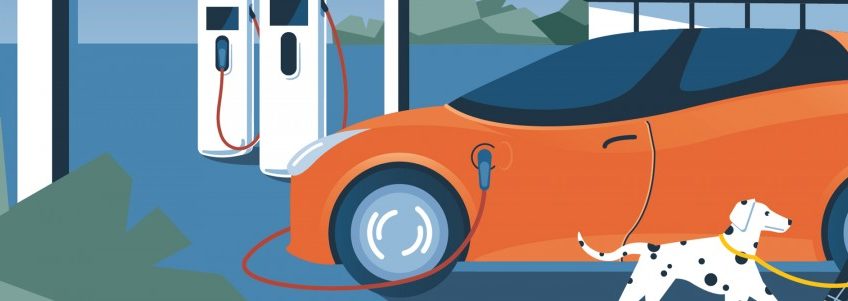The German National Centre for Charging Infrastructure publishes paper discussing the experience of users when charging electric vehicles.
Berlin, 6 October 2020 – In order to reduce greenhouse gas emissions in Germany by 55 to 56% compared to 1990 levels by 2030, it is essential that road traffic be “electrified” fast. To encourage more people to choose an electric car, it is imperative that a comprehensive, demand-based and reliable charging infrastructure is in place. Up to now, experience with charging has been mixed. With the aim of rectifying this situation, the German National Centre for Charging Infrastructure, founded in January 2020, has declared that the satisfaction of electric vehicle users is its most important criterion for the expansion of charging infrastructure.
Acting on behalf of the Federal Ministry of Transport and under the umbrella of the federally owned NOW GmbH, the Centre is pressing ahead with the rapid development of the necessary charging infrastructure in Germany. The Centre’s first publication entitled “Einfach laden – Das Ladeerlebnis als User Journey an öffentlichen Ladestationen für Elektrofahrzeuge jetzt und 2025” (English: “Charging simply – The charging experience as a user journey at public charging stations for electric vehicles today and in 2025”) underscores its user-centric approach.
Johannes Pallasch, Head of the National Centre for Charging Infrastructure: “A vision of the goal, as set out in our paper entitles ‘Einfach laden’ (English: ‘Charging Simply’), is what until now has been lacking in the area of charging infrastructure. We have thus closed a crucial gap, so that all activities can now all follow the same direction, ensuring that users will ultimately benefit. Our work centres around such issues. The satisfaction of the users is what motivates us.”
Universal concept for the ideal process of charging procedures
For many users, the charging of an electric vehicle at a public charging station represents a new experience that differs greatly from the conventional refuelling procedure. There is currently no uniform overall depiction of the “user journey” for charging electric cars. Similarly, no universal concept that outlines the ideal process of the charging procedure exists so far for the near future. The “Einfach laden” paper now makes a proposal for such a universal concept. It is aimed at representatives of federal, state and municipal authorities as well as market participants, such as from the energy sector, the automotive industry, parking management and industry-specific organizations in other industries.
This paper outlines the charging experience of users at public charging stations now and in the near future. It gives an account of the current charging procedure from the user’s point of view, and identifies technological trends with a glance at developments through to 2025. Perspectives and experiences of the users of electric vehicles have been integrated in the paper, as have the findings and forecasts of car manufacturers and charging infrastructure operators.
The paper examines the preparation, implementation, support and experiential character of charging electric vehicles. The following conclusions can be derived for the vision of the “User Journey” goal in the year 2025:
- Conducting the entire charging process – from start to the payment procedure – will be further simplified, especially through advances in communication between the vehicle and the charging station. This will enable a fast and convenient charging process even in bad weather and darkness. Shopping facilities or recreational activities in the vicinity of the charging stations will provide for a pleasant time while charging is in progress.
- Support is improving, especially through the further spread of digital remote maintenance, so that problems are being resolved in the background before and during the charging process.
- User-friendly operation and attractive locations increase the quality of the charging experience at public charging stations. This is particularly evident in the seamless integration of public charging into users’ everyday life or route planning.
- In the future, users will be able to search for a charging station using advanced navigation functions. The possibility of reserving a charging point in advance will become more prevalent.
The National Centre for Charging Infrastructure is developing its plans for a user-friendly public charging infrastructure on the basis of this paper. Its key findings will, for example, help determine the conditions for the planned nationwide 1000-site fast-charging network and the forthcoming funding guideline for public charging infrastructure.
Background
The “Einfach laden – Das Ladeerlebnis als User Journey an öffentlichen Ladestationen für Elektrofahrzeuge jetzt und 2025” paper (English: “Charging simply – The charging experience as a user journey at public charging stations for electric vehicles today and in 2025”) is the result of a series of workshops held by the German National Centre for Charging Infrastructure with automobile manufacturers and charging infrastructure operators in spring 2020. The participants contributed with their user experiences, insights and assumptions for technological development until 2025. In order to supplement the database of the paper with actual user experiences, individual chapters of the paper refer to a recently conducted survey commissioned by NOW GmbH. This was undertaken in the form of a digital pilot survey with 124 people registered as users of electric vehicles in spring 2020. Although the findings were obtained primarily with a view to the situation in Germany, they should also have far-reaching significance for other European countries, provided that the prevailing country-specific regulatory requirements for charging stations are taken into account.


